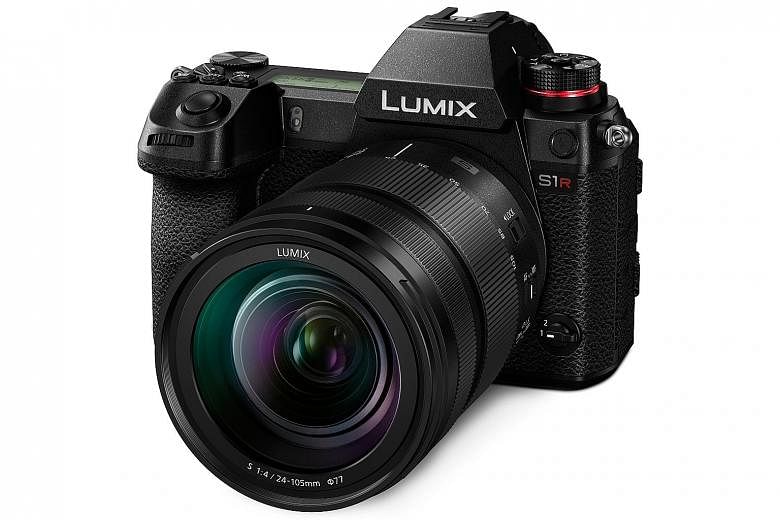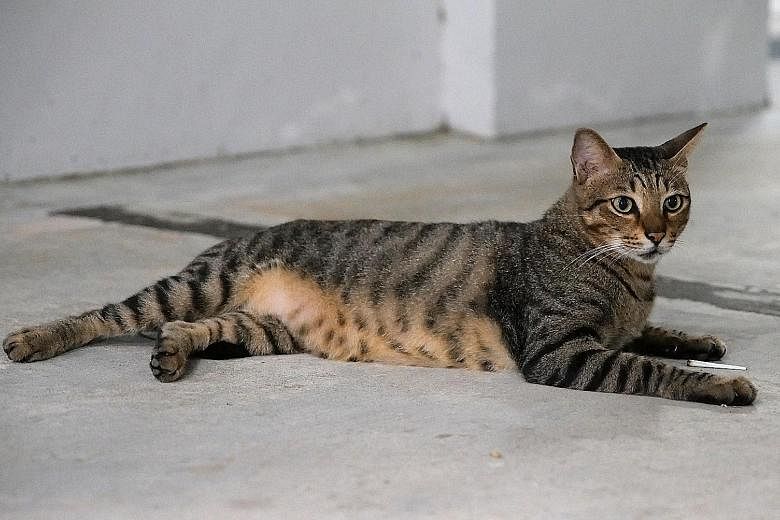My anticipation for the Panasonic Lumix S1R has been building, having first encountered it as a non-working prototype in last year's Photokina show before trying a working model two months ago at the CP+ international camera and photo imaging show.
This is the first full-frame mirrorless camera from Panasonic. The review unit is the 47.3-megapixel high-end model. There is another variant - the 24.2-megapixel Lumix S1.
The S1 is the more video-centric model with a no-crop 4K video output, while the S1R is the higher-resolution photo-centric model.
Both are identical in looks, with a weather-sealed magnesium-alloy body that feels rock solid. The huge ergonomic front grip lets you hold the camera firmly and comfortably while allowing easy access to all the buttons and dials.
The button layout is among the most well-thought-out ones I have seen in years of reviewing cameras.
There is a command dial on top of the grip and another on the top right for quick change of settings. Beside the second command dial is a small monochrome display that shows important information such as aperture size, shutter speed and ISO. In front of the display and behind the shutter release button are three quick buttons for white balance, ISO and exposure compensation.

-
FOR
• Excellent image quality
• Sturdy and weather-sealed body
• Dual memory card slots in different formats
-
AGAINST
• Expensive
• Larger and heavier than its competitors
• Mediocre battery life
-
SPECS
PRICE: $5,199 (body only)
IMAGE SENSOR: 47.3-megapixel MOS full-frame
DISPLAY: 3.2-inch tiltable touchscreen LCD with 2,100,000 dots; electronic viewfinder with 5,760,000 dots
SENSITIVITY: ISO 50 to 51,200
SHOOTING SPEED: Up to 9 frames per second
CONNECTIVITY: Bluetooth, Wi-Fi
WEIGHT: 1,016g (body with battery and SD card)
-
RATING
FEATURES: 5/5
DESIGN: 5/5
PERFORMANCE: 5/5
BATTERY LIFE: 3/5
VALUE FOR MONEY: 3.5/5
OVERALL: 4/5
The right rear has an array of buttons, including ones for Display, Quick Function and Back, as well as a directional pad and a wheel dial that are easily accessible with the right thumb. A mini-joystick near the thumb rest lets you adjust the autofocusing (AF) point quickly.
The mode dial is on the top left, with the left side of the camera having compartments for the audio jacks as well as an HDMI port and a USB-C port that can be used for charging.
The compartment on the right houses two slots for memory cards - an XQD card and an SD card. I like that this camera still allows the use of the more affordable SD card.
The S1 and S1R feature the highest-resolution electronic viewfinder (EVF) in the market, with a resolution of 5.76 million dots and a 120Hz refresh rate.
Using the EVF to compose pictures is almost like looking through an optical viewfinder.
Operation-wise, the S1R is pretty swift. It starts up in 0.9 seconds and shuts down in 1.1 seconds. These timings are faster than most mirrorless cameras' timings of two seconds each.
Using an XQD card with a writing speed rated at 440MB per second, the S1R is able to shoot 42 RAW images in 4.2 seconds before the buffer runs out - this is considered an amazing speed for a high-resolution full-frame mirrorless camera.
Using the Panasonic 24-105 f/4mm L-mount lens, the S1R's AF is instantaneous under bright sunlight. Under dim lighting conditions, it is able to achieve a focus lock in around a second most of the time.
Further aiding focusing is a feature called The Eye AF - activate it and the camera will hunt a subject's eye with utmost precision and speed. This is great for shooting portraits.
Image quality is impressive. The camera produces extremely sharp details that are truly stunning.
Image noise performance is superb as well. There are no visible noise artefacts until ISO 3,200. At ISO 6,400, noise artefacts start to appear, but with only slight detail loss to images. Only at ISO 12,800 and above will you notice significant loss in detail and sharpness.
But the S1R's robust build means it is considerably larger and heavier - it weighs more than 1kg - than competitors such as the Nikon Z7 (675g) and Canon EOS R (660g).
Its battery life is also mediocre as it is rated at 360 still images on a full charge. In my test, I find it is left with 50 per cent charge after shooting 200 still images.
But the biggest bugbear is its price. At $5,199 (body only), the S1R is more expensive than the Canon EOS R with a RF 24-105mm f/4 kit lens ($5,098) and the Sony a7R III ($4,699, body only).



